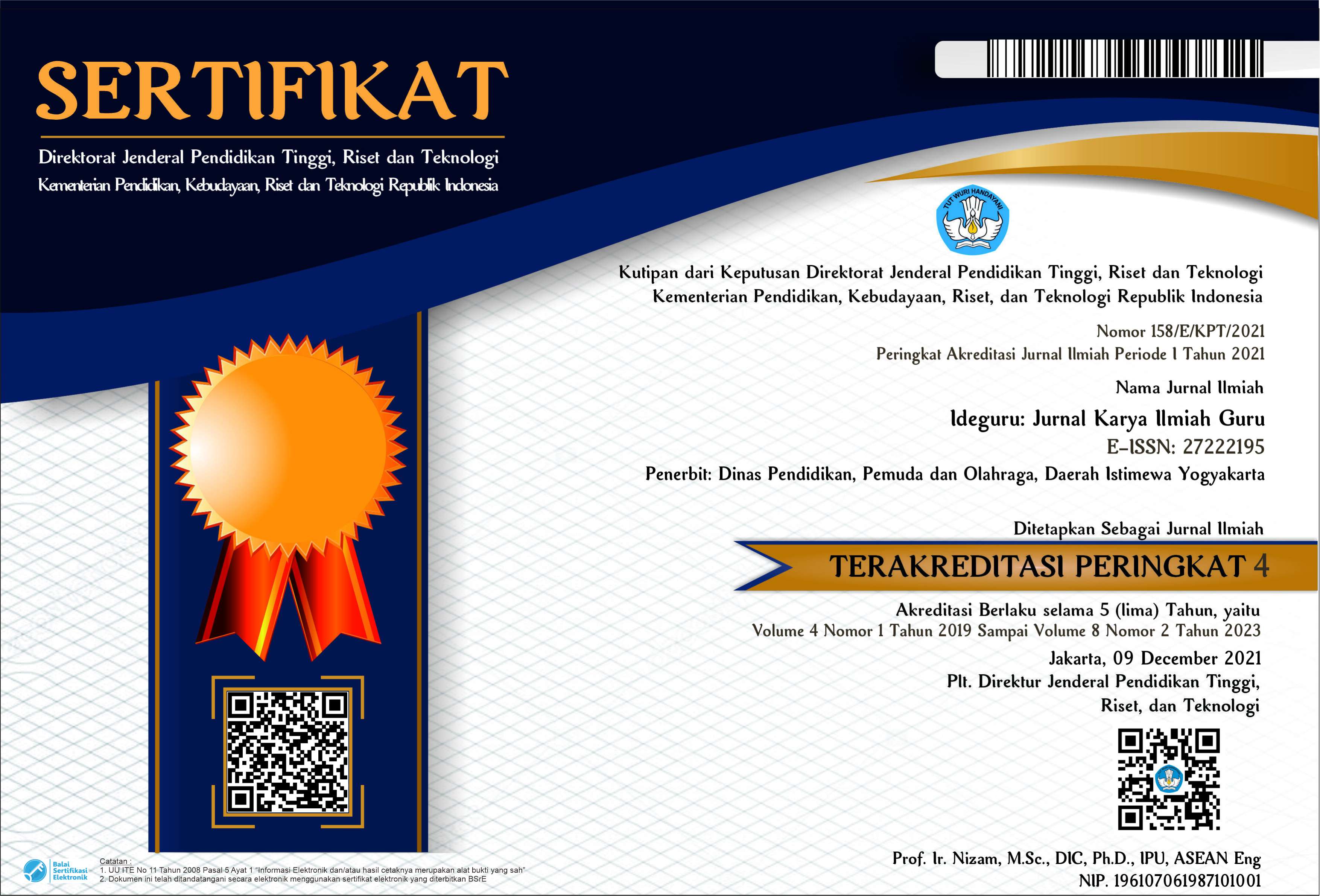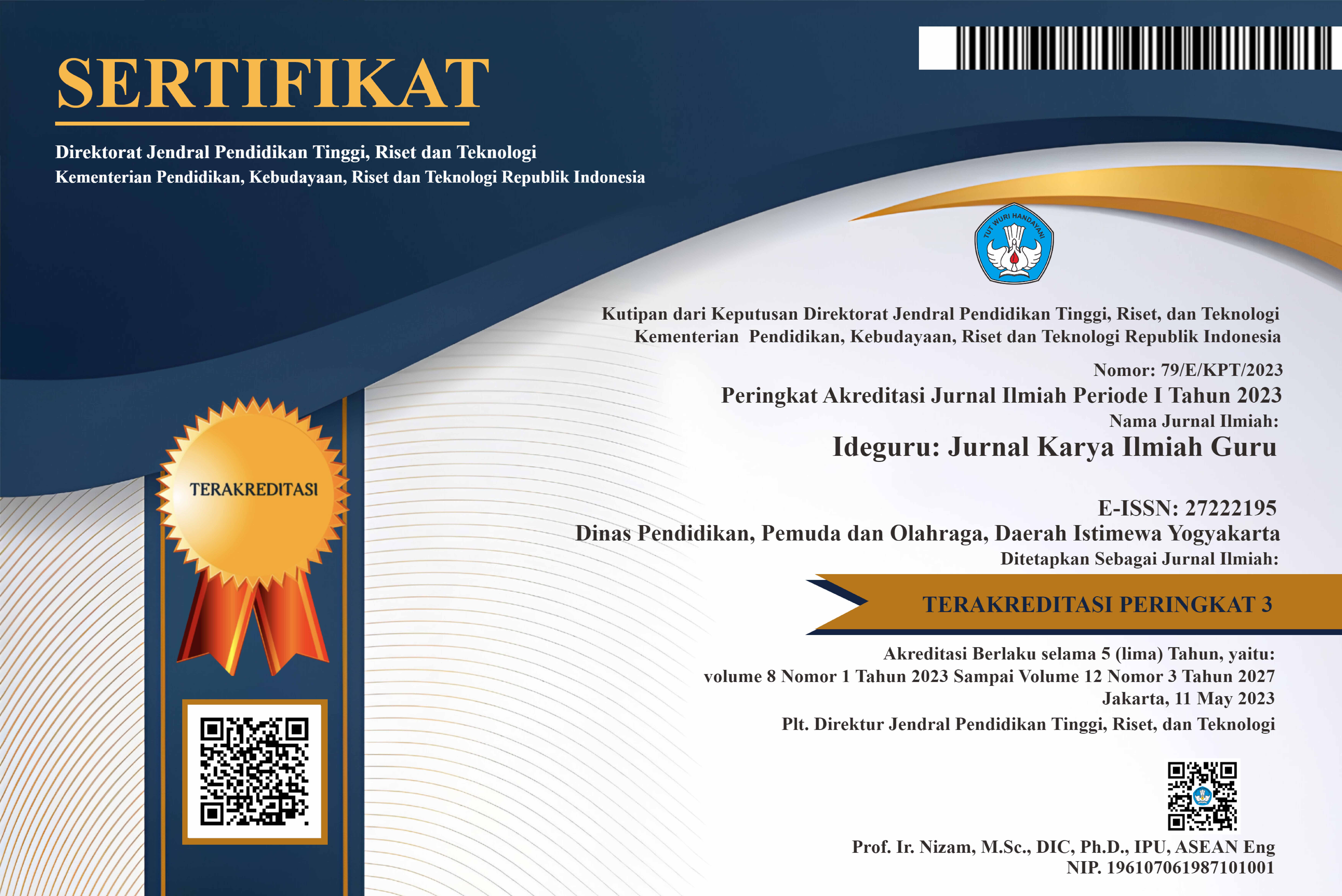The Key Element of Modeling Instruction’s Learning Cycle in 21th Century Skills Learning Process
Abstract
This research aim to know:1)implementation of modeling instruction in student’s critical thinking, collaboration, creativity and innovation, and communication skill’s training; 2)Modeling instruction’s key element in 21 century skills training. This research uses previous research data in student’s collaboration and communication profile. Data for Critical thinking and creativity and innovation uses learning implementation’s material in previous research and other reference. Subject research is 7th grade student in 2018/2019 year periode. Data analysed in quantitative methode. Modeling instruction is integrated in 2 different learning model, inquiry and STEM. Student’s skill in collaboration and communication change in different quantity of student’s criteria. Student’s proportion in “below standart” criteria is same, in “approaching standart” criteria, student in inquiry have less proportion than in STEM, but in “qualified standart” criteria inquiry have more proportion than STEM. In critical thinking and creativity and innovation, both learning model contain activity to train this skills. STEM have more proportion than inquiry, hinger complexity and more modeling instruction’s learning cycle. Research conclution are:1)Modeling instruction can implemented in student’s critical thinking, collaboration, creativity and innovation and communication training; 2)Modeling instruction’s key element in 21st Century Skills training is flexibility, compability , and repeatable and continuity of the learning cycle.
PDF Downloads
Copyright (c) 2019 Imam Wicaksono

This work is licensed under a Creative Commons Attribution 4.0 International License.

 DOI:
DOI:














